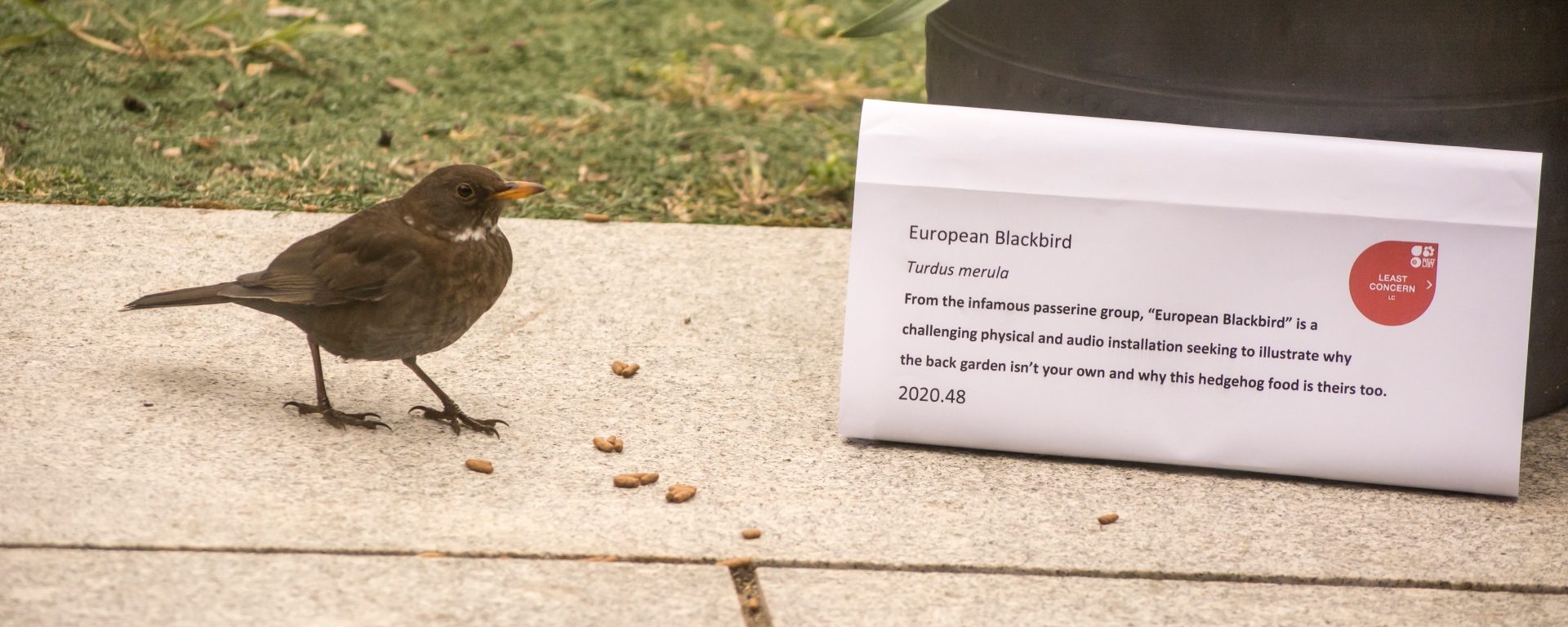Museum Collections Manager Matt Lowe writes:
The past 12 months has meant a lot more screen time, especially for a collections manager who has a never ending list of edits for a museum database that seems longer than, well…. a year under lockdown. Ordinarily, to give tired eyes a rest, we would look up from our screens to chat to colleagues, or go and double check a label – but this year human colleagues were thin on the ground (Zoom notwithstanding).
Resisting (I tell myself) the minefield of a kitchen full of biscuits, I often take a quick look at my slightly depauperate back garden, swaddled in astroturf as it is from the previous owners. But during the early days of lockdown I very often encountered a female blackbird with a distinctive ring of white feathers around her neck, a condition called partial albinism which just means a lack of feather pigmentation in some areas.

Every day I would watch as “Ringneck” (as she quickly became known), rootled around our pot plants, cleaning up any leftover hedgehog food and generally giving an air of being in charge. She would often watch me from the fence – looking vaguely irritated that I was in her space. As if to prove the point we would often catch her tearing up freshly planted small plants like lettuce as soon as our backs were turned, presumably looking for food or nesting material. Resisting the urge to be cross, we grew accustomed to sharing the space with a miniature feathered vandal.

Eventually, as spring drew on she was accompanied by a male and we would often see her carrying nesting material. Two or three ruffled chicks could be found creeping around the pond not long after with anxious parents watching nearby.
Over the summer, when working from home, I would try to find time to spot my blackbird brood. Rearing three hungry chicks couldn’t have been easy, but blackbirds often produce three to four broods a year. Regrettably, 40% of their efforts are in vain and I’m almost certain that some of those little balls of feathered fluff ended up in the talons of our frequently seen sparrowhawk. However whenever Ringneck disappeared for a few days and I started to fear the worst she would reappear with a churlish call, wreaking destruction on any saplings we happen to have unprotected.

Over the winter I went a couple of months without seeing her, and I missed our daily chats/arguments (depending on your point of view). But sure enough, when the recent snow fell and I put out extra bird seed rations she came back, shrieking at me whenever I nipped outside.
As I write this in early spring I can hear Ringneck on the roof tearing at the moss, making a mess on the back patio, and carrying it off to her nearby nest. I’ve no doubt that soon our back garden will be a lively blackbird crèche but the entertainment value is worth a few torn up lettuces and it’s nice to have a regular visitor without it contravening lockdown rules!



One thought on “Five minutes in nature: Ringneck the blackbird”